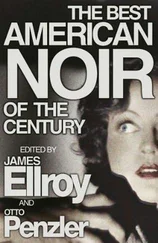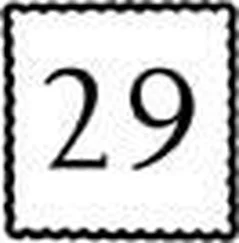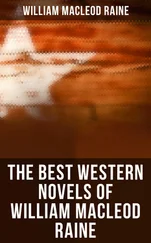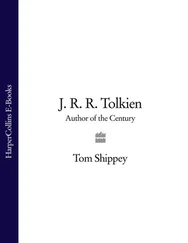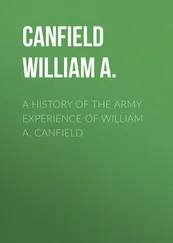William Doolittle - Inventions in the Century
Здесь есть возможность читать онлайн «William Doolittle - Inventions in the Century» — ознакомительный отрывок электронной книги совершенно бесплатно, а после прочтения отрывка купить полную версию. В некоторых случаях можно слушать аудио, скачать через торрент в формате fb2 и присутствует краткое содержание. Жанр: foreign_antique, foreign_prose, на английском языке. Описание произведения, (предисловие) а так же отзывы посетителей доступны на портале библиотеки ЛибКат.
- Название:Inventions in the Century
- Автор:
- Жанр:
- Год:неизвестен
- ISBN:нет данных
- Рейтинг книги:5 / 5. Голосов: 1
-
Избранное:Добавить в избранное
- Отзывы:
-
Ваша оценка:
- 100
- 1
- 2
- 3
- 4
- 5
Inventions in the Century: краткое содержание, описание и аннотация
Предлагаем к чтению аннотацию, описание, краткое содержание или предисловие (зависит от того, что написал сам автор книги «Inventions in the Century»). Если вы не нашли необходимую информацию о книге — напишите в комментариях, мы постараемся отыскать её.
Inventions in the Century — читать онлайн ознакомительный отрывок
Ниже представлен текст книги, разбитый по страницам. Система сохранения места последней прочитанной страницы, позволяет с удобством читать онлайн бесплатно книгу «Inventions in the Century», без необходимости каждый раз заново искать на чём Вы остановились. Поставьте закладку, и сможете в любой момент перейти на страницу, на которой закончили чтение.
Интервал:
Закладка:
William Henry Doolittle
Inventions in the Century
CHAPTER I.
INTRODUCTORY – INVENTIONS AND DISCOVERIES – THEIR DEVELOPMENT
In treating of the subject of Inventions it is proper to distinguish them from their scientific kindred – Discoveries.
The history of inventions is the history of new and useful contrivances made by man for practical purposes. The history of scientific discoveries is the record of new things found in Nature, its laws, forces, or materials, and brought to light, as they exist, either singly, or in relation, or in combination.
Thus Galileo invented the telescope, and Newton discovered the law of gravitation. The practical use of the invention when turned to the heavenly bodies served to confirm the truth of the discovery.
Discovery and invention may be, and often are, united as the soul is to the body. The union of the two produces one or more inventions. Thus the invented electro-telegraph consists of the combination of discoveries of certain laws of electricity with an apparatus, by which signs are communicated to distances by electrical influence.
Inventions and discoveries do not precede or follow each other in order. The instrument may be made before the laws which govern its operation are discovered. The discovery may long precede its adaptation in physical form, and both the discovery and adaptation may occur together.
Among the great inventions of the past are alphabetical writing, Arabic notation, the mariner's compass, the telescope, the printing-press, and the steam-engine. Among the great discoveries of the past are the attraction of gravitation, the laws of planetary motion, the circulation of the blood, and velocity of light. Among the great inventions of the nineteenth century are the spectroscope, the electric telegraph, the telephone, the phonograph, the railways, and the steam-ships. Among the great discoveries of this century are the correlation and conservation of forces, anæsthetics, laws of electrical energy, the germ theory of disease, the molecular theory of gases, the periodic law of Mendeljeff in chemistry, antiseptic surgery, and the vortex theory of matter. This short enumeration will serve to indicate the different roads along which inventions and the discoveries of science progress.
By many it is thought that the inventions and discoveries of the nineteenth century exceed in number and importance all the achievements of the kind in all the ages of the past.
So marvellous have been these developments of this century that, not content with sober definitions, men have defined invent , even when speaking only of mechanical productions, as "creating what had not before existed;" and this period has been described as an age of new creations. The far-off cry of the Royal Preacher, "There is no new thing under the sun: Is there anything whereof it may be said, see this is new, it hath been already of old time which was before us," is regarded as a cry of satiety and despair, finding no responsive echo in the array of inventions of this bright age.
But in one sense the Preacher's words are ever profoundly true. The forces and materials of Nature always exist, awaiting man's discovery, and at best he can but vary their relations, re-direct their course, or change their forms. In a still narrower sense the truth of the Preacher's declaration is apparent: —
In an address before the Anthropological Society of Washington in 1885, the late Prof. F. A. Seely, of the United States Patent Office, set forth that it was one of the established laws of Invention, that,
"Every human invention has sprung from some prior invention, or from some prior known expedient."
Inventions, he said, do not, like their protectress, Pallas Athene, spring forth full grown from the heads of their authors; that both as to modern inventions and as to those whose history is unrecorded, each exhibits in itself the evidence of a similar sub-structure; and that, "in the process of elimination we go back and back and find no resting place till we reach the rude set of expedients, the original endowment of men and brutes alike."
Inventions, then, are not creations, but the evolution of man-made contrivances.
It may be remarked, however, as was once said by William H. Seward: "The exercise of the inventive faculty is the nearest akin to that of the Creator of any faculty possessed by the human mind; for while it does not create in the same sense that the Creator did, yet it is the nearest approach to it of anything known to man."
There is no history, rock-record, or other evidence of his existence as man, which discloses a period when he was not an inventor.
Invention is that divine spark which drove, and still drives him to the production of means to meet his wants, while it illuminates his way. From that inward spark must have soon followed the invention of that outer fire to warm and cheer him, and to melt and mould the earth to his desires. Formed for society, the necessity of communication with his fellows developed the power of speech. Speech developed written characters and alphabets. Common communication developed concert of action, and from concert of action sprung the arts of society.
But the evolution of invention has not been uniform. Long periods of slowness and stagnation have alternated with shorter or longer periods of prolific growth, and these with seasons of slumber and repression.
Thus, Prof. Langley has said that man was thousands of years, and possibly millions, in evolving a cutting edge by rubbing one stone on another; but only a few thousand years to next develop bronze tools, and a still shorter period tools of iron.
We cannot say how long the period was from the age of iron tools to the building of the pyramids, but we know that before those stupendous structures arose, the six elementary mechanical powers, the lever, the wheel, the pulley, the inclined plane, the wedge and the screw, were invented. And without those powers, what mechanical tool or machine has since been developed? The age of inventions in the times of the ancients rested mainly upon simple applications of these mechanical powers. The middle ages slumbered, but on the coming of the fifteenth and sixteenth centuries, the inventions of the ancients were revived, new ones added, and their growth and development extended with ever-increasing speed to the present time.
The inventions of the nineteenth century, wonderful and innumerable as they are, and marvellous in results produced, are but the fruit of the seed sown in the past, and the blossom of the buds grown upon the stalks of former generations. The early crude stone hatchet has become the keen finished metal implement of to-day, and the latter involves in itself the culmination of a long series of processes for converting the rough ore into the hard and glistening steel.
The crooked and pointed stick with which the Egyptian turned the sands of the Nile has slowly grown to be the finished plough that is now driven through the sod by steam.
The steam-operated toys of Hero of Alexandria were revived in principle and incorporated in the engines of Papin and the Marquis of Worcester in the seventeenth century; and the better engines of Savery, Newcomen, and more especially of James Watt in the eighteenth century, left the improvements in steam-engines of the nineteenth century – great as they are – inventions only in matter of detail.
It has been said that electrical science began with the labours of Dr. Gilbert, published in 1600. These, with the electrical discoveries and inventions of Gray, Franklin, Galvani, and others in the next century, terminating with the invention of his battery by Volta in 1800, constituted the framework on which was built that world of flashing light and earth-circling messages in which we now live.
Читать дальшеИнтервал:
Закладка:
Похожие книги на «Inventions in the Century»
Представляем Вашему вниманию похожие книги на «Inventions in the Century» списком для выбора. Мы отобрали схожую по названию и смыслу литературу в надежде предоставить читателям больше вариантов отыскать новые, интересные, ещё непрочитанные произведения.
Обсуждение, отзывы о книге «Inventions in the Century» и просто собственные мнения читателей. Оставьте ваши комментарии, напишите, что Вы думаете о произведении, его смысле или главных героях. Укажите что конкретно понравилось, а что нет, и почему Вы так считаете.



